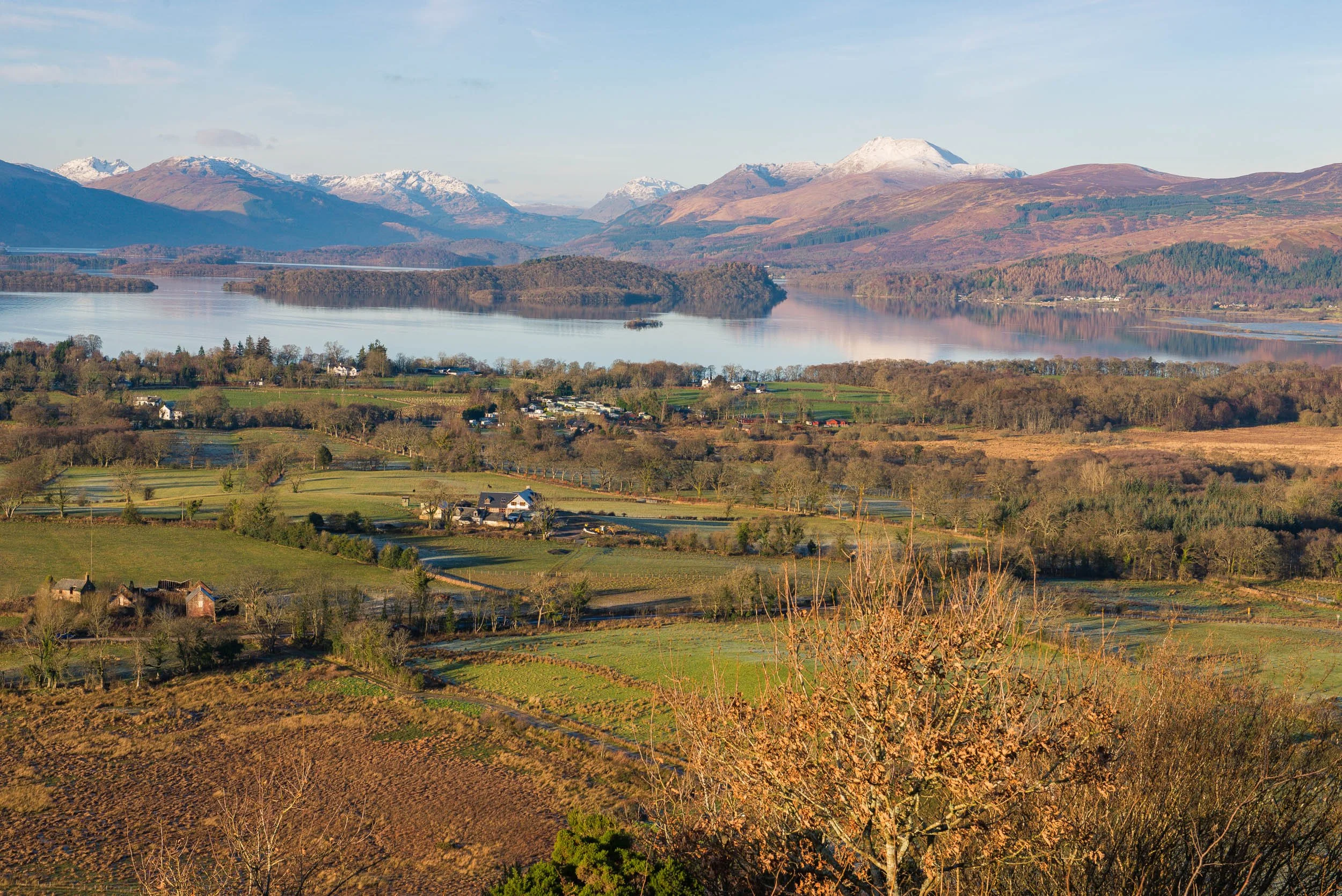
Park Wonders
(Picture: Falls of Falloch)
The Wonders of Loch Lomond & The Trossachs
Here are some of the fascinating features of the National Park – a short checklist of wonders both natural and man-made. There are lots more, of course – and you will discover them on your visit.
Falls of Falloch
Signposted in Glen Falloch, north of Loch Lomond, this fine waterfall is spectacular after heavy rain. Short walk from car-park. Glen Falloch itself has remnants of old native pines.
The Cobbler
The Cobbler (Ben Arthur) is a very popular climb and the three crags that form the summit area of this mountain make it one of the most easily recognisable mountain outlines in Scotland. It is one of the few requiring rock climbing/scrambling to reach one of the tops.
Rest and Be Thankful
The A83 runs west from Loch Long to the watershed at the famous pass known as the Rest and Be Thankful – words originally inscribed on a stone by the military road builders in 1753. The route from Glen Kinglas and into Glen Croe was also a noted drove road for cattle from Argyll en route to the Lowland markets.
Ben More
The highest point in the Loch Lomond and the Trossachs National Park, at 3843ft (1174m) and also the 15th highest mountain in Scotland! Popularly climbed along with its neighbour Stobinian, either from the end of the road in Balquhidder Glen, or from Glen Dochart.
The Loch Katrine Aqueduct
Taking the pure water of Loch Katrine as a supply for the growing population of Glasgow was a magnificent achievement for Victorian engineers. The 26 mile (42km) pipeline or aqueduct starts from Royal Cottage near Stronachlachar and goes via tunnel where the aqueduct runs parallel to Loch Chon and onwards to reservoirs at Milngavie. Queen Victoria opened the works in 1859.
Glen Ogle Viaduct
The trackbed of this railway originally running north from Callander up Glen Ogle, bound for the west, was closed in 1965. The section of the line above Lochearnhead had the reputation as offering the best view from a railway carriage anywhere in the UK, eastwards down Loch Earn. Though the trains have gone, the view is still enjoyed by walkers and cyclists, as the trackbed is now a popular walk and cycleway.
Duncryne Hill, Gartocharn
Sometimes called ‘The Dumpling’, this volcanic plug rises behind the village of Gartocharn. Though only 465ft (142m) high, the panorama northwards over Loch Lomond is breathtaking.
Limited parking at roadside.
Bracklinn Falls, Callander
These spectacular falls (signposted from main road in Callander) are a short walk from car-park. Fine views from foot-bridge spanning the Keltie Water.
Read more on the Trossachs Trail website.

Conic Hill
Conic Hill
With its distinctive series of humps marking the Highland Boundary Fault (see below), this hill behind Balmaha offers superb views over Loch Lomond’s islands. The West Highland Way reaches the loch via Conic Hill.
Falls of Dochart
The Falls here are really a series of rapids on the approach to the picturesque bridge that carries the A827 into the village. Popular spot for photographers.
Highland Boundary Fault
Running diagonally across Scotland in a north-easterly, south-westerly direction, this highly visible geological boundary marks the edge of the Highlands. Especially conspicuous at Balmaha, behind Aberfoyle and at the Pass of Leny above Callander.
Hell’s Glen
A narrow steep-sided ‘hanging valley’ in Argyll, Hell’s Glen or Gleann Beag is occupied by a headstream of the River Goil to the east of Loch Fyne and northwest of Loch Goil.
Ben Lui
Just south of Tyndrum, Ben Lui is a National Nature Reserve. Its flora is especially noteworthy, and a range of Arctic-alpines thrive here because of the underlying ‘base-rich’ (less acid) rocks.
Falls of Leny
Picturesque rapids in wooded setting on the Garbh Uisge, easily accessed from A84 north of Callander at the gateway to the Highlands, lying virtually on the Highland Boundary Fault.
Loch Sloy Dam
The first project of the North of Scotland Hydro-Electric Board was the construction in 1946 of a 182ft (56m) high dam across the old homelands of the Clan MacFarlane west of Ben Vorlich, the mountain itself penetrated by a two-mile tunnel. This brings water down the east side of the mountain where electricity is created by generators before the water reaches Loch Lomond. The construction phase used prisoners of war awaiting repatriation.
West Highland Railway
Though not the first railway in the National Park, the opening of the North British Railway’s West Highland line in 1894 introduced travellers to viewpoints of the Clyde sea-lochs, in particular, that remain sensational to this day – as do the views of Loch Lomond and Ben Lomond. At Crianlarich the north-south West Highland Railway originally passed over the east-west running Callander and Oban Railway (later closed from Dunblane to Crianlarich in 1965 see entry below), the two lines being joined by a ‘spur’ in 1897, still in use today.




